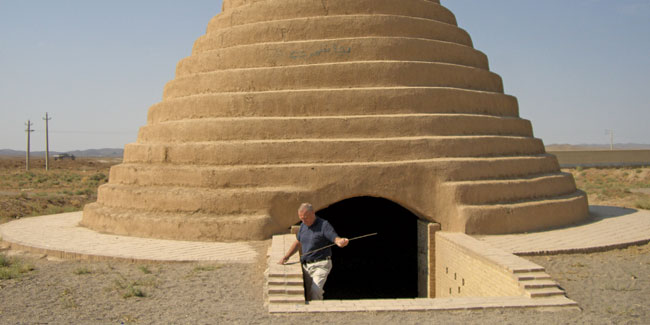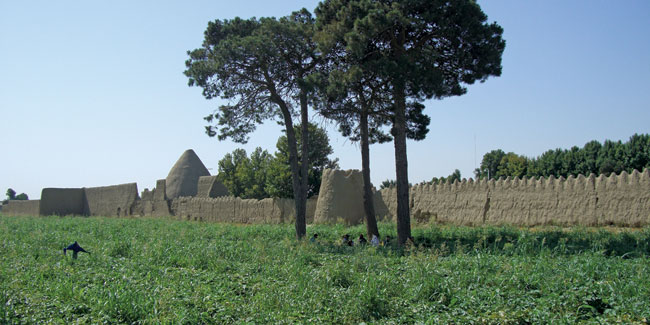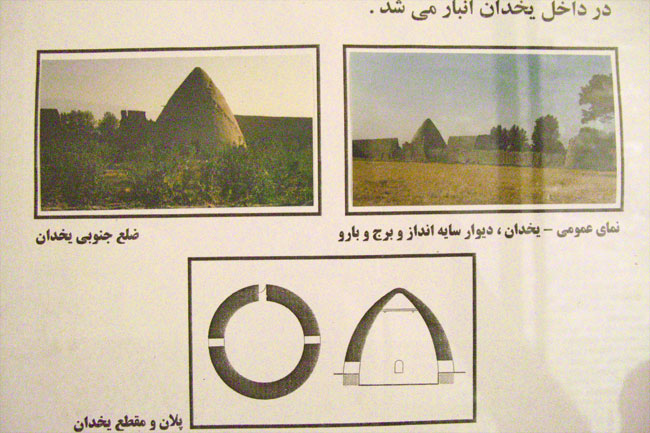The article below appeared originally in the www.hemmingjorgensen.com website. This is a thesis summary of Hemming Jorgensen’s ice house research project in Iran.
===============================================================
Only very limited literature and no archaeological material exists about the traditional Persian mud-brick ice houses the origins of which may be connected to that of the qanat, the typical Iranian subterranean water supply system for irrigation. These unique examples of vernacular architecture are facing a sorry fate after they went out use about 50 years ago; with the advent of electricity countrywide they were supplanted by modern refrigeration and most of them left to decay and disappear.
Hemming Jorgensen at an ice house in Iran (Picture originally posted on: www.hemmingjorgensen.com).
On the basis of a comprehensive field work, which included survey and registration of still identifiable ice house sites, this dissertation endeavors to answer the questions as to where, how and why the ice houses were built, operated and largely forgotten. The survey found, registered and mapped in total 129 ice house sites, of which remnants of ice houses were found on only 104 of them. An Ice House List and the pertaining location map represent the most important documents of the dissertation project.
There did turn out to be both a variation in types and within types of ice houses; the main types were domed (111 examples), walled (6) and underground ice houses (12). They were situated at villages (104), at towns (13), and at caravansaries or forts (12). Of the total of 129 ice houses, 71 had (had) an associated open-air ice-making plant, and 58 were pure storage facilities. The survey triples the number of previously registered examples. This study represents the first study of the traditional Iranian way of making and preserving ice for daily use.
Excellent view of the ice house at Ali-Abad village near Tehran (Picture originally posted on: www.hemmingjorgensen.com).
Information on the origin and function of the ice houses was difficult to come by, yet some headway was made into these thorny issues. Although it appears reasonable to connect the origin and history of ice houses to that of qanats – which made life and agriculture possible on the perimeter of the large deserts – there is no textual or archaeological evidence for their existence in Iran before the 17th century AD. No ice house exists anymore in its original form and full extent. Unless a concerted effort is made in terms of restoration and preservation, the prognosis is not good for the majority of Iran’s ice houses.
Plate in Robat Karim Museum (Picture originally posted on: www.hemmingjorgensen.com).






